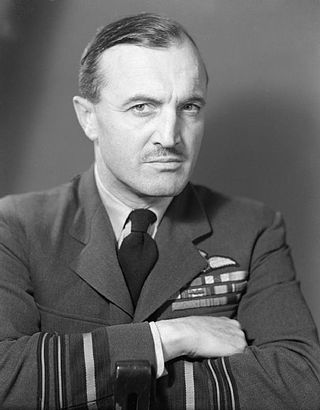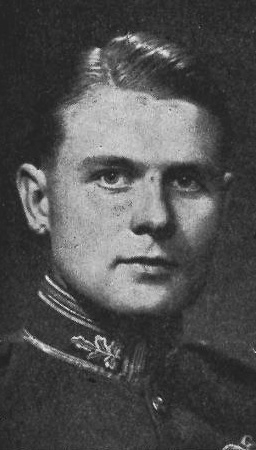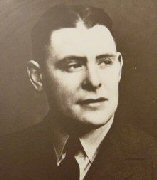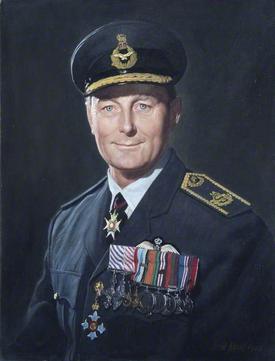Post-war
After receiving a King's Commendation for Valuable Service in the Air on 9 June 1949, [14] Weir served as Senior Officer-in-Charge Administration (SOA) at AHQ Malta from 3 Dec 1949, [2] with promotion to group captain on 1 January 1951. [15] He worked in the Air Ministry from 1952 to 1955, when he became commander of the Central Gunnery School at RAF Leconfield. [2] He was task force commander for the Operation Buffalo British nuclear tests at Maralinga in Australia in 1956, which saw the first air drop of a live British nuclear weapon. After promotion to air commodore on 1 January 1957, [16] he was air task group commander for the Operation Grapple nuclear tests at Christmas Island in 1957, the first test of a British thermonuclear weapon, [2] for which he was made a Commander of the Order of the British Empire in the 1958 New Year Honours, [17]
Afterwards, Weir attended the Joint Services Staff College. He became the Senior Air Staff Officer (SASO) at HQ Middle East Air Force on 12 May 1958, and became Deputy Commander in Chief of the Middle East Air Force on 23 April 1959. [2] He was promoted to air vice-marshal on 1 July 1959. [18] and was made a Companion of the Order of the Bath on 9 February 1960. [19] On 15 May 1961, he became commandant of the School of Land/Air Warfare; [2] on 31 March 1963 the school was absorbed into the Joint Warfare Establishment, [20] of which he then became commandant. [2]
Weir's final posting, on 30 October 1964, [2] was to Washington, D.C., as deputy to the British representative on the NATO Military Committee and deputy head of the British Defence Staff (Washington). He died suddenly there of a heart attack on 5 August 1965. [1]

Marshal of the Royal Air Force William Sholto Douglas, 1st Baron Douglas of Kirtleside, was a senior commander in the Royal Air Force. After serving as a pilot, then a flight commander and finally as a squadron commander during the First World War, he served as a flying instructor during the inter-war years before becoming Director of Staff Duties and then Assistant Chief of the Air Staff at the Air Ministry.

Marshal of the Royal Air Force Arthur William Tedder, 1st Baron Tedder, was a senior Royal Air Force commander. He was a pilot and squadron commander in the Royal Flying Corps in the First World War and he went on to serve as a senior officer in the Royal Air Force during the inter-war years when he served in Turkey, Great Britain and the Far East.

Marshal of the Royal Air Force Sir Andrew Henry Humphrey, was a senior officer in the Royal Air Force. He fought in the Second World War as a fighter pilot taking part in the Battle of Britain and also took part in the withdrawal from Aden in November 1967. He served as the Chief of the Air Staff advising the new Labour Government on the implementation of their latest Defence Review. He then served as Chief of the Defence Staff but caught pneumonia within three months of taking office and died shortly afterwards.

Marshal of the Royal Air Force Sir Michael James Beetham, was a Second World War bomber pilot and a high-ranking commander in the Royal Air Force from the 1960s to the 1980s. As Chief of the Air Staff during the Falklands War he was involved in the decision to send the Task Force to the South Atlantic. At the time of his death Beetham was one of only six people holding his service's most senior rank and, excluding Prince Philip's honorary rank, and had the longest time in rank, making him the senior Marshal of the Royal Air Force.

Marshal of the Royal Air Force Sir John Cotesworth Slessor, was a senior commander in the Royal Air Force (RAF), serving as Chief of the Air Staff from 1950 to 1952. As a pilot in the Royal Flying Corps during the First World War, he saw action with No. 17 Squadron in the Middle East, earning the Military Cross, and with No. 5 Squadron on the Western Front, where he was awarded the Belgian Croix de Guerre. Between the wars he commanded No. 4 Squadron in England, and No. 3 (Indian) Wing, earning the Distinguished Service Order for operations with the latter in Waziristan. In 1936, he published Air Power and Armies, which examined the use of air power against targets on and behind the battlefield.

Marshal of the Royal Air Force Sir Dermot Alexander Boyle, was a senior officer in the Royal Air Force. He served in the Second World War initially as a staff officer with the Advanced Air Striking Force in Reims in which capacity he organised the evacuation of the Force through Brest in May 1940. His war service included tours as a bomber squadron commander, as a station commander and also as an air group commander. He was Chief of the Air Staff in the late 1950s and, in that role, deployed British air power during the Suez Crisis in October 1956 and defended the RAF against the views of Duncan Sandys, the Minister for Defence, who believed that the V bomber force rendered manned fighter aircraft redundant.

Marshal of the Royal Air Force Sir Thomas Geoffrey Pike, was a senior officer in the Royal Air Force. He served in the Second World War as a night fighter squadron commander and then as a station commander. He was Chief of the Air Staff in the early 1960s and, in that role, deployed British air power as part of the British response to the Brunei Revolt. Also, in the face of escalating costs, he implemented the cancellation of the British Blue Streak ballistic missile system but then found the RAF was without any such capability when the Americans cancelled their own Skybolt ballistic missile system. He went on to be Deputy Supreme Commander Supreme Headquarters Allied Powers Europe in the mid-1960s.

Marshal of the Royal Air Force Samuel Charles Elworthy, Baron Elworthy, was a senior officer in the Royal Air Force. He served as commander of a squadron of Blenheim bombers and then as a station commander during the Second World War. He became Chief of the Air Staff in the mid-1960s and implemented the cancellation of the TSR-2 strike aircraft and the HS681 military transport aircraft programmes. He also became Chief of the Defence Staff in which role he oversaw the evacuation from Aden in November 1967 and had to respond to the growing crisis in Northern Ireland in the late 1960s.

Marshal of the Royal Air Force Sir John Grandy, was a senior officer in the Royal Air Force. He was the only officer who fought and commanded a squadron during the Battle of Britain to reach the post of Chief of the Air Staff. In the latter role he implemented the final stages of the RAF's withdrawal from the Persian Gulf and the Far East, oversaw the ordering and subsequent cancellation of the F-111 strike aircraft and handed over Britain's nuclear deterrent role to the Royal Navy.

Marshal of the Royal Air Force Neil Cameron, Baron Cameron of Balhousie, was a senior officer in the Royal Air Force. He fought in the Second World War as a fighter pilot taking part in the Battle of Britain, the Battle of Alam el Halfa, the First Battle of El Alamein and the Second Battle of El Alamein and then in operations in Burma. He served as Chief of the Air Staff in the late 1970s advising the British Government on the reinforcement of the British garrison in Belize which was under threat from Guatemala at the time. He also served as the Chief of the Defence Staff at the end of the 1970s in which role he secured pay comparability for services personnel involved in civil support during the firemen's strike, visited the People's Republic of China and lectured extensively on the Soviet air threat.

Marshal of the Royal Air Force Sir Denis Frank Spotswood, was a senior commander in the Royal Air Force. He fought in the Second World War as a flying boat pilot and then as a coastal reconnaissance squadron commander during Operation Torch, the invasion of North Africa. He served as a station commander in the late 1940s and early 1950s before becoming a senior air commander in the late 1950s. As the Chief of the Air Staff in the early 1970s he had a major role in implementing the defence savings demanded by the Heath Government in the face of economic difficulties at the time.

Air Chief Marshal Sir James Milne Robb, was a senior Royal Air Force commander. After early service in the First World War with the Northumberland Fusiliers, Robb joined the Royal Flying Corps and became a flying ace credited with seven aerial victories. He was granted a permanent commission in the Royal Air Force in 1919 and commanded No. 30 Squadron RAF in the Iraqi revolt against the British. In 1939, Robb travelled to Canada to help establish the Empire Air Training Scheme, a massive training program that provided the Royal Air Force with trained aircrew from Canada, Australia, New Zealand and Southern Rhodesia. He commanded No. 2 Group RAF of RAF Bomber Command and No. 15 Group RAF of RAF Coastal Command.

Air Chief Marshal Sir James Donald Innes Hardman,, known as Donald Hardman, was a senior Royal Air Force commander. He began his flying career as a fighter pilot in World War I, achieving nine victories to become an ace. During World War II, Hardman held senior staff and operational posts. He was Chief of the Air Staff (CAS) of the Royal Australian Air Force (RAAF) from 1952 to 1954, after which he served as a member of the British Air Council until retiring in 1958.

Air Marshal Sir John Rowlands, was a senior Royal Air Force commander and a recipient of the George Cross for his work in bomb disposal during the Second World War. He later worked in the development of Britain's nuclear weapons programme.
Air Chief Marshal Sir John Barraclough was a Royal Air Force pilot during the Second World War who went on to become Vice-Chief of the Defence Staff.

Harry George Smart, is best known for having been the commander of RAF Habbaniya during the first part of the Anglo-Iraqi War. Smart was an officer in the British Army, the Royal Flying Corps and the Royal Air Force. He served during the First World War, during the interwar period, and during the Second World War.

Air Marshal Sir Ralph Squire Sorley, was a senior commander in the Royal Air Force (RAF). He began was a pilot in the Royal Naval Air Service during the First World War, and rose to senior command in the Second World War. After the latter he held several senior appointments until his retirement in 1948. and in 1947 was made a Commander of the Legion of Merit of the United States of America.
Air Vice Marshal Deryck Cameron Stapleton, was a Royal Air Force officer who served as Commandant of the RAF Staff College, Bracknell from 1966 to 1968.

Air Vice-Marshal Wilfrid Ewart Oulton, was an officer in the Royal Air Force. During the Second World War he was credited with sinking three German U-boats—U-463, U-663, and U-563—in one month while serving in RAF Coastal Command. He was in charge of the British nuclear tests of hydrogen bombs in the Pacific Ocean in Operation Grapple in 1957.

Air Vice Marshal Stewart William Blacker Menaul, was an officer in the Royal Air Force (RAF). During the Second World War he served in RAF Bomber Command with the elite Pathfinder Force. After the war he participated in the British nuclear weapons tests in Australia, and was on board the Vickers Valiant that dropped Britain's first atomic bomb on 11 October 1956 during Operation Buffalo.

















